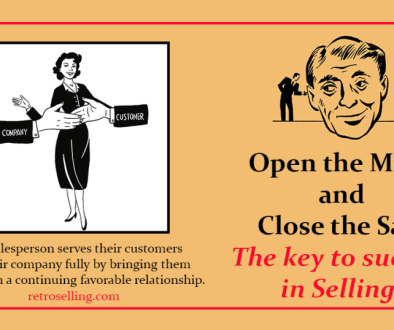5 WAYS TO LAND IN THE INBOX OF YOUR SUBSCRIBERS
If you want your email campaigns to land in the inbox of your subscribers, you should improve the email deliverability. The golden rule of email deliverability is not to act like a spammer. Every single email you send, including transactional emails such as receipts, passwords, and resets, should be as non-spam like as possible that your users in all probability need. Even though the email got sent on your end does not imply that it made it to your subscribers’ inbox. It could have gone to the spam or junk folder or got blocked altogether. It means that you need to put the following measures in place.
1) ISP compliance
 Internet service providers are the guards of your subscribers’ inboxes. Its goal is to deliver emails that its users want and expect to receive. Nothing gets beyond without them. They provide the client with their email address. These include Gmail, Hotmail, AOL, Comcast, Yahoo, colleges that give out dot Edu addresses and enterprises. Each has its own set of rules, checks, and algorithms to decide whether your mail passes. Many even publish their standards online. Your job is to earn their trust because they watch what you’re sending by making a few inquiries to check whether anybody has heard about you or have read your message to ensure that you’re posting something that clients want. If they don’t trust you, regardless of how good your email marketing campaigns are, no one will see them. If you structure your email program with this in mind, then everything else typically falls into place.
Internet service providers are the guards of your subscribers’ inboxes. Its goal is to deliver emails that its users want and expect to receive. Nothing gets beyond without them. They provide the client with their email address. These include Gmail, Hotmail, AOL, Comcast, Yahoo, colleges that give out dot Edu addresses and enterprises. Each has its own set of rules, checks, and algorithms to decide whether your mail passes. Many even publish their standards online. Your job is to earn their trust because they watch what you’re sending by making a few inquiries to check whether anybody has heard about you or have read your message to ensure that you’re posting something that clients want. If they don’t trust you, regardless of how good your email marketing campaigns are, no one will see them. If you structure your email program with this in mind, then everything else typically falls into place.
2) Device compliance
 For emails to make the right impact people need to be able to read them. They’ll do it using all sorts of devices and gadgets. So, you need to be open to exploring different deliverability techniques and methods.
For emails to make the right impact people need to be able to read them. They’ll do it using all sorts of devices and gadgets. So, you need to be open to exploring different deliverability techniques and methods.
3) Blacklist compliance
 There are various blacklist organizations that ISPs subscribe to help them determine whether you are a spammer or not. These organizations hold large databases of spam domains and IP addresses. Some of the trusted ones are BSB, ACBL, PSP, and spam cop. Each has their spam filters. ISPs usually don’t publish which blacklist services they use. In any case, just knowing the big players can help you track if you ever get blacklisted. And so, you can get in touch with them to get you removed from their blacklist. The rule of thumb to follow to be blacklist compliant is never purchase or rent lists from shady sources and don’t scrape websites to harvest email addresses.
There are various blacklist organizations that ISPs subscribe to help them determine whether you are a spammer or not. These organizations hold large databases of spam domains and IP addresses. Some of the trusted ones are BSB, ACBL, PSP, and spam cop. Each has their spam filters. ISPs usually don’t publish which blacklist services they use. In any case, just knowing the big players can help you track if you ever get blacklisted. And so, you can get in touch with them to get you removed from their blacklist. The rule of thumb to follow to be blacklist compliant is never purchase or rent lists from shady sources and don’t scrape websites to harvest email addresses.
4) In and out compliance
 Have a proper opt-in process. The sender must have either explicit or implicit consent to send email campaigns. The sender must document how it got the email address, including the opt-in date, connecting IP address, and the sign-up page. What’s more, the message must inform recipients how to opt-out of future messages. In other words, the email must include a functioning unsubscribe link. If a subscriber opts out, you must honour it within a reasonable timeframe.
Have a proper opt-in process. The sender must have either explicit or implicit consent to send email campaigns. The sender must document how it got the email address, including the opt-in date, connecting IP address, and the sign-up page. What’s more, the message must inform recipients how to opt-out of future messages. In other words, the email must include a functioning unsubscribe link. If a subscriber opts out, you must honour it within a reasonable timeframe.
5) Country compliance
 Numerous nations have laws regulating what you can and can’t do with emails. And even if you aren’t operating in the country where the rule applies, you may still be subjected to their requirements if you’re sending emails to that country. Complying with them is to your benefit and should be part of any good email marketing process. The more well-known ones are Canspam in the US and Casle in Canada. If you’re sending your emails to other states, you may want to consult their local laws. However, complying with Canspam and Casle can put you into compliance with a vast majority of countries. Canspam stands for controlling all non-solicited pornography and marketing. Some of the requirements include the message cannot have false or deceiving header information. The email cannot use misleading subject lines. If the content is in an advertisement, you must identify it as such. The campaign must clearly state the location of the business. Casle stands for Canadian anti-spam legislation, and it has one of the strictest anti-spam laws in the world. Some of the requirements include the message must identify the sender and must provide a way for the recipient to contact the sender. Even if you don’t have Canadian subscribers, compliance with Casle would be a decent practice because it will cover your bases with most other countries’ email and anti-spam laws.
Numerous nations have laws regulating what you can and can’t do with emails. And even if you aren’t operating in the country where the rule applies, you may still be subjected to their requirements if you’re sending emails to that country. Complying with them is to your benefit and should be part of any good email marketing process. The more well-known ones are Canspam in the US and Casle in Canada. If you’re sending your emails to other states, you may want to consult their local laws. However, complying with Canspam and Casle can put you into compliance with a vast majority of countries. Canspam stands for controlling all non-solicited pornography and marketing. Some of the requirements include the message cannot have false or deceiving header information. The email cannot use misleading subject lines. If the content is in an advertisement, you must identify it as such. The campaign must clearly state the location of the business. Casle stands for Canadian anti-spam legislation, and it has one of the strictest anti-spam laws in the world. Some of the requirements include the message must identify the sender and must provide a way for the recipient to contact the sender. Even if you don’t have Canadian subscribers, compliance with Casle would be a decent practice because it will cover your bases with most other countries’ email and anti-spam laws.
Even if you are not a spammer, the mailbox providers do all sorts of complex and sophisticated analysis to determine whether your message is worthy of the inbox. So, you need to understand how this process functions so you can utilize it in your favor to improve your email deliverability.





